Anubias barteri “Coffeefolia”
Scientific name: Anubias barteri “Coffeefolia”
Family: Araceae
Maximum size reached under cultivation: 15 - 25 cm (5.91 - 9.84 inch)
014
Recommended pH range: 6.2 - 8.9
Recommended water hardness: 0 - 30°dGH (0 - 535.71ppm)
0°C 32°F30°C 86°F
Recommended temperature range: 20 - 30 °C (68 - 86°F)
Preferred propagation method: Rhizome
Native to: Cultivated form / Hybrid
Growth rate: Slow
Recommended substrate: Gravel
Lighting requirements: Subdued
Ideal placement in tank: Midground
🌿 Family
Araceae
🏷️ Common Names
Anubias Coffeefolia
🌍 Origin
Anubias barteri "Coffeefolia" is a cultivated variety derived from Anubias barteri, a species native to West Africa. This variety has been selectively bred for its unique leaf structure and coloration. Like other Anubias species, it thrives in humid environments and can be found in shallow waters, marshes, and along riverbanks.
🔧 Morphology and Leaf Characteristics
This variety features corrugated, arching leaves that resemble the foliage of coffee plants, hence its name. Leaves start as a reddish-brown color and mature into a deep green. They typically reach 5–10 cm in length and possess a tough, leathery texture, making them resistant to nibbling by herbivorous fish.
🌿 Propagation
As a rhizome plant, proper placement is essential. The rhizome should never be buried in the substrate. Instead, it should be attached to driftwood, rocks, or hardscape using plant-safe thread or glue. To propagate, divide the rhizome into sections, each with a few leaves and healthy roots. New growth will develop gradually from each section.
🚡 Growth and Maintenance
Anubias barteri "Coffeefolia" grows slowly, making it a low-maintenance choice for most setups. It rarely needs trimming and is ideal for tanks with fish that tend to disturb plants. Clean leaves regularly to prevent algae accumulation, especially under bright lights.
🔦 Lighting Requirements
This plant thrives under low to moderate lighting. It adapts to various lighting conditions but performs best in partially shaded areas, such as under taller plants. Excessively bright light can trigger algae on its broad leaves. Provide 6–8 hours of light daily for healthy growth.
⚖️ Difficulty
Very easy. This plant is well-suited for both beginners and experienced aquarists. It tolerates pH levels from 6.2 to 8.9, water hardness from 0 to 30°N, and temperatures between 20–30°C (68–86°F). It thrives in both low-tech and high-tech aquariums.
📅 Submersion and Aquascaping
Anubias barteri "Coffeefolia" is fully submersible and ideal for aquascaping. It works well in the midground or on decorative hardscape, adding texture and depth to the layout. Combined with mosses or other slow-growing plants, it helps create a lush, natural-looking scape.
🚧 Water Flow and Placement
Place it in areas with gentle water movement, such as near a filter outlet. This keeps the leaves free from debris and helps prevent algae growth. Avoid stagnant zones for better overall plant health.
🐝 Compatibility
This plant is compatible with shrimp, snails, peaceful fish, and even herbivores like goldfish and African cichlids. Its thick leaves resist damage and offer hiding spots for smaller tank mates. Occasional algae buildup can be controlled by algae eaters like Otocinclus or Amano shrimp.
🎨 Appearance and Short Description
Anubias barteri "Coffeefolia" stands out with its deeply veined, wavy leaves and sturdy rhizome. It is prized for its unique coloration, transitioning from reddish-brown to dark green. Suitable for submerged or emersed growth, it can flower in stable conditions, although blooms are mostly decorative and short-lived underwater.
❓ Frequently Asked Questions (FAQ)
- Can it be fully submerged?
✅ Yes, it grows well submerged or emersed in paludariums. - Does it need CO₂?
💨 No. It grows well without CO₂, but enrichment may improve leaf size and vigor. - How often should I trim it?
✂ Rarely. Trimming is only needed to remove old or damaged leaves. - Why are there algae on the leaves?
🌞 Excessive light or poor circulation. Reduce lighting or place it in a shadier area. - How fast does it grow?
🐢 Very slowly—just a few leaves per month in stable conditions.

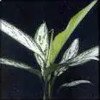 Aglaonema commutatum “Silver Queen”
Aglaonema commutatum “Silver Queen”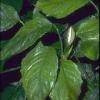 Aglaonema simplex
Aglaonema simplex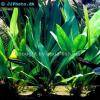 Anubias afzelii
Anubias afzelii Anubias barteri
Anubias barteri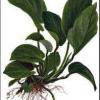 Anubias barteri “Caladiifolia” ‘1705’
Anubias barteri “Caladiifolia” ‘1705’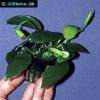 Anubias barteri “Nana”
Anubias barteri “Nana”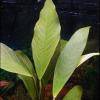 Anubias barteri v. angustifolia
Anubias barteri v. angustifolia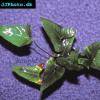 Anubias gracilis
Anubias gracilis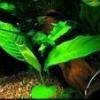 Anubias heterophylla
Anubias heterophylla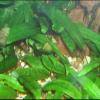 Cryptocoryne affinis
Cryptocoryne affinis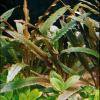 Cryptocoryne albida
Cryptocoryne albida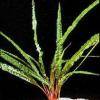 Cryptocoryne balansae
Cryptocoryne balansae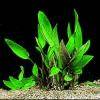 Cryptocoryne becketti
Cryptocoryne becketti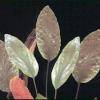 Cryptocoryne blassi
Cryptocoryne blassi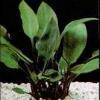 Cryptocoryne ciliata
Cryptocoryne ciliata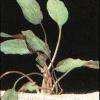 Cryptocoryne cordata
Cryptocoryne cordata Cryptocoryne lutea
Cryptocoryne lutea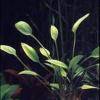 Cryptocoryne nevillii
Cryptocoryne nevillii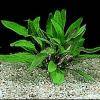 Cryptocoryne petchii
Cryptocoryne petchii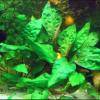 Cryptocoryne pontederiifolia
Cryptocoryne pontederiifolia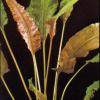 Cryptocoryne wendtii
Cryptocoryne wendtii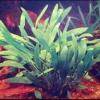 Cryptocoryne willisii
Cryptocoryne willisii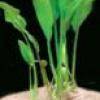 Lagenandra ovata
Lagenandra ovata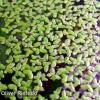 Lemna minor
Lemna minor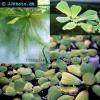 Pistia stratiotes
Pistia stratiotes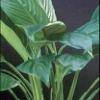 Spathiphyllum petite
Spathiphyllum petite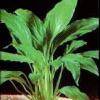 Spathiphyllum wallisii
Spathiphyllum wallisii